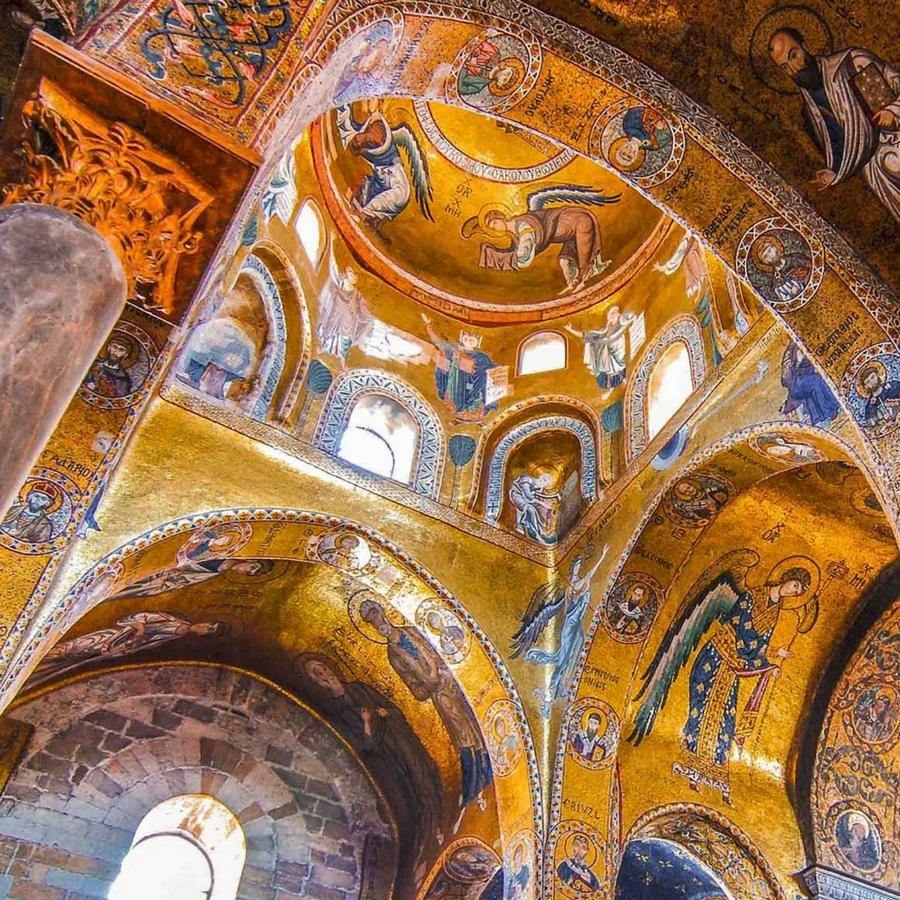The thirty flavours of Lavolio’s signature confectionery range are made using a wide variety of ingredients many of which are sourced from different parts of Italy and include, amongst others, pistachios from Bronte in Sicily as well as the delicately sugar-coated pine nuts in our Arabian Nights Collection.

You may be interested to learn more about these ingredients, where they come from and how such amazingly diverse ingredients found their way into Italian culture and cuisine.
Let’s go to Sicily, magical island located off the Southern Italian peninsula and in fact closer to Tunisia than it is to Florence or Milan. Its strategic position at the geographical and historical heart of the Mediterranean meant that Sicily has been invaded and influenced by a whole variety of different peoples and cultures for millennia (Phoenicians, Athenians, Romans, Arabs, Normans, Byzantines and Bourbons) resulting in a unique cultural legacy.
The Arab reign in Sicily lasted for two centuries, starting in the year 827, and their influence can be seen in so many aspects of Sicilian culture and society today including architecture, food and language.
Architecture
During the Arab reign, a number of large churches, such as the cathedral of Palermo, were converted to mosques. An Arabic inscription from the Koran can still be seen on one of the cathedral’s columns.

The Normans who came to power after the Arabs, admired their architecture so much that they continued to use Arabic architects and craftsmen for their new constructions. So although not many original buildings remain from the Arab period, several bear the stylistic and structural hallmarks of the period, like the red domes of the church of San Giovanni degli Eremiti and the decorative mosaics of the Capella Palatina and Monreale Cathedral in Palermo.
In 2015 the Arab-Norman Palermo along with the Cathedrals of Cefalù and Monreale were declared World Heritage Sites. Arab-Norman Palermo is a route located along the Northern coast of Sicily and includes two palaces, three churches, a cathedral, a bridge, as well as the cathedrals of Cefalù and Monreale.



Language & Place Names
Dotted all around the island of Sicily are towns and villages with names of Arabic origin: Caltanisseta and Caltavuturo come from the Arabic “calta” for castle, Regalbuto, Racalmuto and Regaliali are derived from the “rahl”, meaning area or village, and Mislimeri signifies the resting place of the Emir (Manzil-Al-Emir).
The Sicilian dialect is rich with words of Arabic origin such as cassata (qashata - cheese), gebbia (già-bìa – water tank for irrigation) and zagara (zahr – orange blossom).
And of course Food…
The Arabs are responsible for introducing many new ingredients which have become part of the local cuisine. These include spices such as aniseed, cinnamon, and saffron as well as pistachios, almonds, apricots, artichokes, pomegranates and sesame. Still today, traditional savoury pasta and fish recipes use raisins and pine kernels.
In February, the annual “Mandorlo in Fiore” festival takes place in Agrigento against the backdrop of the Valley of the Temples and marks the magnificent blossoming of the almond trees.

A dish that is distinctively Arab although not as famous as some other typical Sicilian desserts, like Cassata or Cannoli, is called 'Biancomangiare' and is made with almonds, pistachios, pine nuts, cinnamon amongst other ingredients.

With so much history and and so many culinary temptations, it's no wonder Giuseppe Verdi declared, “You may have the universe if I may have Italy”!


